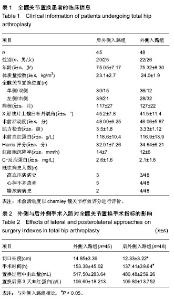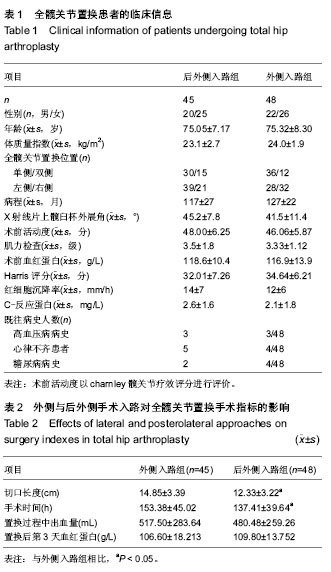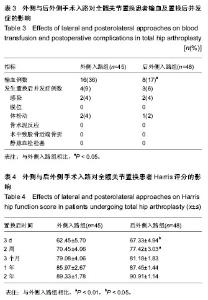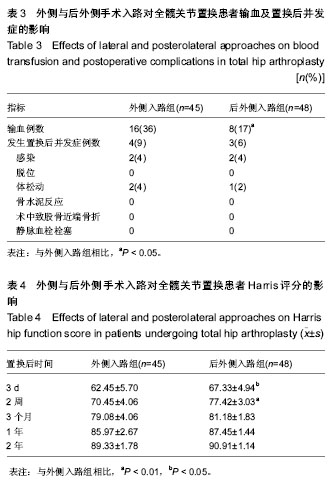| [1] Bal BS, Haltom D, Aleto T, et al. Early complications of primary total hip replacement performed with a two-incision minimally invasive technique. J Bone Joint Surg Am. 2005; 87(11):2432-2438.
[2] Woolson ST. In the absence of evidence--why bother? A literature review of minimally invasive total hip replacement surgery. Instr Course Lect. 2006;55:189-193.
[3] Duwelius PJ. Two-incision minimally invasive total hip arthroplasty: techniques and results to date. Instr Course Lect. 2006;55:215-222.
[4] de Verteuil R, Imamura M, Zhu S, et al. A systematic review of the clinical effectiveness and cost-effectiveness and economic modelling of minimal incision total hip replacement approaches in the management of arthritic disease of the hip. Health Technol Assess. 2008;12(26):iii-iv, ix-223.
[5] Imamura M, Munro NA, Zhu S, et al. Single mini-incision total hip replacement for the management of arthritic disease of the hip: a systematic review and meta-analysis of randomized controlled trials. J Bone Joint Surg Am. 2012;94(20): 1897-1905.
[6] Smith TO, Blake V, Hing CB. Minimally invasive versus conventional exposure for total hip arthroplasty: a systematic review and meta-analysis of clinical and radiological outcomes. Int Orthop. 2011;35(2):173-184.
[7] Reininga IH, Zijlstra W, Wagenmakers R, et al. Minimally invasive and computer-navigated total hip arthroplasty: a qualitative and systematic review of the literature. BMC Musculoskelet Disord. 2010;11:92.
[8] Lloyd JM, Wainwright T, Middleton RG. What is the role of minimally invasive surgery in a fast track hip and knee replacement pathway? Ann R Coll Surg Engl. 2012;94(3): 148-151.
[9] Witzleb WC, Stephan L, Krummenauer F, et al. Short-term outcome after posterior versus lateral surgical approach for total hip arthroplasty - A randomized clinical trial. Eur J Med Res. 2009;14(6):256-263.
[10] Minns Lowe CJ, Barker KL, Dewey ME, et al. Effectiveness of physiotherapy exercise following hip arthroplasty for osteoarthritis: a systematic review of clinical trials. BMC Musculoskelet Disord. 2009;10:98.
[11] Marker DR, Strimbu K, McGrath MS, et al. Resurfacing versus conventional total hip arthroplasty - review of comparative clinical and basic science studies. Bull NYU Hosp Jt Dis. 2009; 67(2):120-127.
[12] Jolles BM, Bogoch ER. Posterior versus lateral surgical approach for total hip arthroplasty in adults with osteoarthritis. Cochrane Database Syst Rev. 2006;(3):CD003828.
[13] Jolles BM, Bogoch ER. Posterior versus lateral surgical approach for total hip arthroplasty in adults with osteoarthritis. Cochrane Database Syst Rev. 2004;(1):CD003828.
[14] Clohisy JC, St John LC, Schutz AL. Surgical treatment of femoroacetabular impingement: a systematic review of the literature. Clin Orthop Relat Res. 2010;468(2):555-564.
[15] Smith-petersen MN. Approach to and exposure of the hip joint for mold arthroplasty. J Bone Joint Surg Am. 1949;31A(1): 40-46.
[16] Knopp W, Neumann K. Indications for diagnostic and therapeutic arthroscopy of "small joints" (elbow, upper ankle joint, wrist joint, hip joint. Chirurg. 1993;64(3):163-169.
[17] Toni A, Paderni S, Sudanese A, et al. Osteorticular amyloidosis in a patient under dialysis treated by total hip arthroplasty: case report and review of the literature. Chir Organi Mov. 2003;88(4):385-396.
[18] Kobayashi S. Whether bone quality matters or not in durability of total hip arthroplasty? Bone quality matters in durability of total hip arthroplasty. Clin Calcium. 2011;21(5):746-750.
[19] Li J, Wang Z, Li M, et al. Total hip arthroplasty using a combined anterior and posterior approach via a lateral incision in patients with ankylosed hips. Can J Surg. 2013; 56(5):332-340.
[20] 杨述华.股骨头坏死诊断要点、研究现状及治疗进展[C].//中国康复医学会骨与关节及风湿病专业委员会,华中科技大学协和医院骨科疾病研究所,华中科技大学协和医院骨科.全国骨关节与风湿病暨第三届武汉国际骨科高峰论坛论文汇编.武汉:全国骨关节与风湿病暨第三届武汉国际骨科高峰论坛, 2012.
[21] Inaba Y, Kobayashi N, Yukizawa Y, et al. Little clinical advantage of modified Watson-Jones approach over modified mini-incision direct lateral approach in primary total hip arthroplasty. J Arthroplasty. 2011;26(7):1117-1122.
[22] Jain K, Subramanian S, Hodgkinson J, et al. Comparison of femoral stem alignment in primary total hip replacement by transtrochanteric and posterior approach. Pol Orthop Traumatol. 2013;78:115-119.
[23] Müller M, Tohtz S, Springer I, et al. Randomized controlled trial of abductor muscle damage in relation to the surgical approach for primary total hip replacement: minimally invasive anterolateral versus modified direct lateral approach. Arch Orthop Trauma Surg. 2011;131(2):179-189.
[24] Restrepo C, Parvizi J, Pour AE, et al. Prospective randomized study of two surgical approaches for total hip arthroplasty. J Arthroplasty. 2010;25(5):671-679.e1.
[25] 张健,周爱国.经后方及外侧小切口微创全髋关节置换入路的比较研究[J].重庆医科大学学报,2007,32(9):991-993.
[26] Werner BC, Brown TE. Instability after total hip arthroplasty. World J Orthop. 2012;3(8):122-130.
[27] Masonis JL, Bourne RB. Surgical approach, abductor function, and total hip arthroplasty dislocation. Clin Orthop Relat Res. 2002;(405):46-53. |



